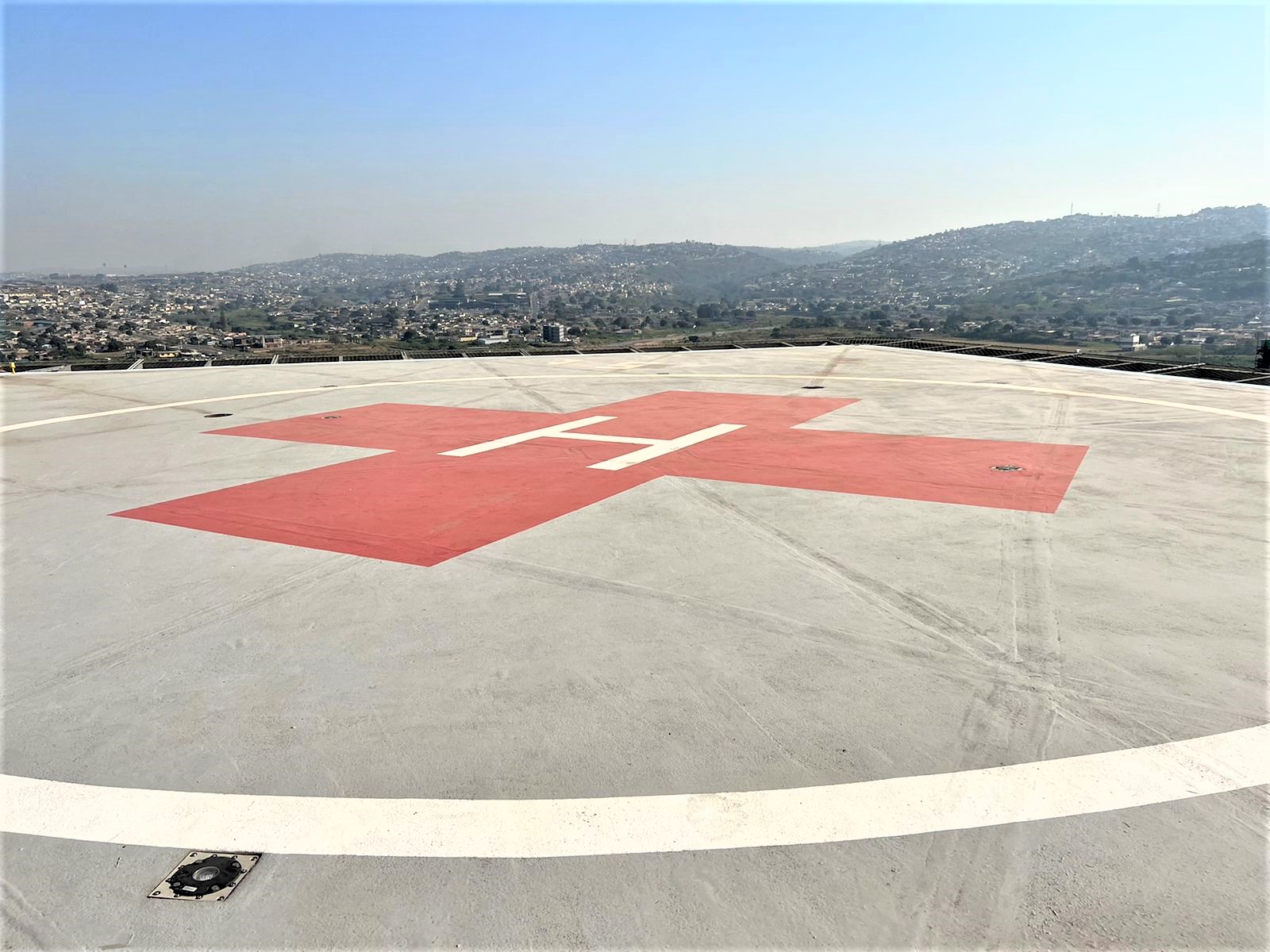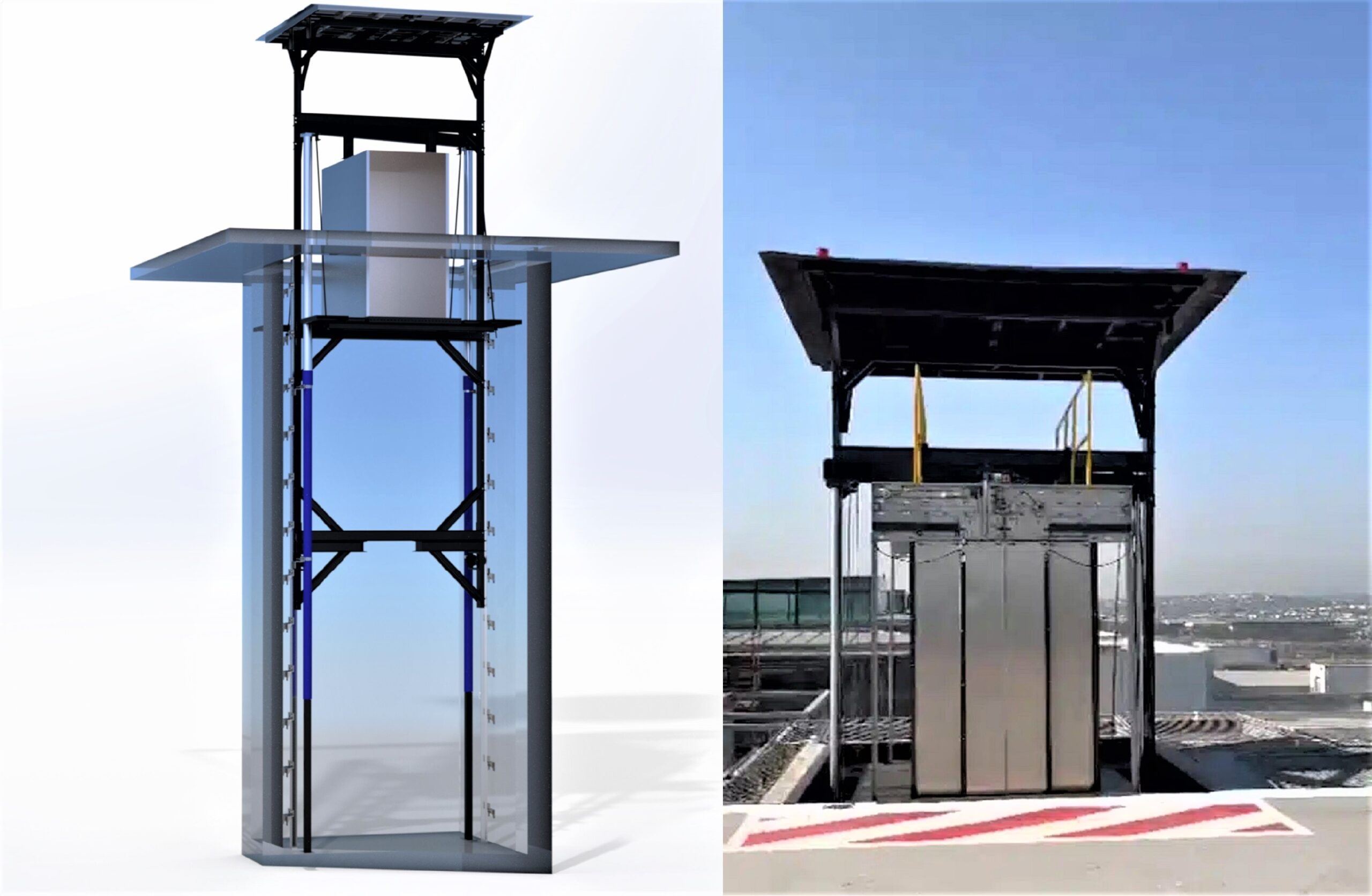EM – It is a specially designed elevator, installed on the rooftop of Dr. Pixley Ka-Isaka Seme Memorial in KwaMashu, South Africa.
Ambulance helicopters are often used for emergencies due to their ability to land directly on the roof of a hospital. When transporting patients, the mobility and agility of an ambulance helicopter is very important, realizing the goal of the fastest, safest and easiest transport of patients to the hospital. This special operation lift, in addition to ensuring safe, emergency transport for everyone, also has to meet other extreme conditions.

Dr. Hospital Pixley Ka-Isaka Seme Memorial
First, aviation law states that nothing should protrude around the helipad during take-off and landing. This means that the roof of the lift must be completely flat with the helipad’s surface area when not in use. The elevator must be able to bring the cabin to the airport deck on the top floor of the building when staff and patients need to use the elevator to get down.
This lift is specially designed to transport patients from the heliport to the emergency room in optimal conditions. Accordingly, the elevator consists of a double bearing frame driven by two direct acting pistons. The cabin is fixed at the top of the frame, while the movable bottom is used to guide the elevator as it passes through the roof of the building. Hydraulic pistons will help achieve the highest thrust, which can gently lift the elevator cabin from the emergency floor to the helipad area. To increase stability and rigidity, the elevator is equipped with a double chain system with guide rails installed inside the shaft under the roof of the building, which helps to keep the elevator stable when the cabin is at the highest position which is on the roof even in high winds.
To meet the flatness of the airport surface, the roof of the elevator covering the cabin with super-hard steel will become helipad. After the plane stops, the elevator cabin with the elevator frame and roof will rise above the airport floor to pick up patients, medical staff and attached equipment. After the cabin goes down, the cabin roof will return to level with the helipad. In this way, the aerodrome on the roof will become a uniform plane, with no overhangs that could jeopardize helicopter landings.

Helipad on the hospital rooftop
Another factor that manufacturers must address is finding a solution to prevent corrosion. To withstand all weather changes and harsh environments in which the elevator operates, the elevator’s electrical system and cabin are constructed with special materials that are water and corrosion resistant. As for the protection of the steel structure of the elevator, the mechanical parts, such as the cabin, door and cabin frame, are painted with marine grade C5-M anti-corrosion paint, a highly durable paint for ships, which is durable in harsh environmental conditions.
In addition to the above standards, this special elevator is specially designed to transport large volumes including patients, medical staff with hospital beds and attached medical equipment. Therefore, elevators must be made of tough and impact-resistant materials. The elevator has a load capacity of 1600kg, a speed of 0.5 m/s, and has a cabin size of 1.4 m wide, 2.53 m long and 2.52 m high.

Model (left) and elevator in operation (right)
The Blain Servo device (SEV) integrated in the control system of the elevator will provide stable acceleration and deceleration, unaffected by any factors such as current variations or external influences. Elevator operations can be monitored, recorded and adjusted via a laptop on site or via other devices remotely via an internet connection./.



